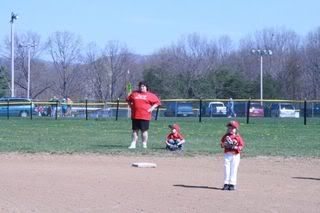One of the
relatively new kids on the block, but one that has made a lot of money, in the
world of exercise supplementation have been NO Boosters. These come in a few different forms from just
straight l-arginine to glycine-arginine-alpha-ketoisocaproic acid (GAKIC). To most trainees the claims make sense. Increased vasodilation brings more blood to
muscles which makes you stronger in the gym and increases muscle protein
sysnthesis (muscle building) afterwards.
And when products like NO Xplode and SuperPump 250 literally claim you
will get “roadmap vascularity and muscle tearing pumps” and have professional
body builders saying they swear by the stuff there will probably be a line of
trainees out the door waiting to buy.
Sounds great, where do I sign up?
What It Does
Arginine is
the major player when it comes to nitric oxide (NO) production. Arginine is a conditionally essential amino
acid and has a host of other health benefits not related to training (mostly in
postoperative wound healing). Arginine
is oxidated to NO via nictric oxide synthase (NOS). The NO is then thought to work its bioactive
magic on the muscles and vascular system.
It does this by dilating (makes bigger) the blood vessels. The reasoning is that the bigger the blood
vessels the more volume of blood that can get to and help the muscle perform. There have also been claims that arginine
supplements increase the growth hormone response.
But Does It Actually Work?
Yes and no. Arginine containing supplements will dilate
the blood vessels, that much is true.
And when taken in conjunction with caffeine it can give you a boost of
energy. But, NO has been shown to
improve exercise performance in UNTRAINED trainees only. Anytime a study has been done with trained
individuals the benefits have disappeared, even with higher doses.
Even when a
study has shown a benefit it is usually short lived. In a study on young males a NO group and a
placebo group performed ten 10s sprints with a one minute rest period between
sprints. The NO group showed an
increased mean power for the SECOND SPRINT ONLY. For all the other sprint trials there was no
statistically significant improvement in performance. Also note that this same protocol was
performed with trained cyclists and the NO group showed zero increased
performance over the control group.
The increased growth hormone response is also very misleading. When studies
have been conducted at rest there has been shown to be an increase in growth
hormone secretion with both high and low doses.
When studies have been conducted looking at growth hormone response to
NO boosters in conjunction with exercise, the growth hormone response is
actually LOWER than it would have been with exercise alone.
If you are
brand spanking new to training NO boosters may give you some performance
enhancement in the short term. BUT, it
may actually hinder progress by limiting your natural growth hormone
response. Trust me; you’d rather have a higher
growth hormone output than a bit of a buzz doing your 95 lb. bench press.
Should I Take It?
No.
Is It Safe?
If you
shouldn’t take it, it doesn’t matter if it is safe. Buuuut if you’re not going to listen to me
and take it for psychological reasons then yes, it’s safe to take. Even at high doses no real negative side
effects have been shown.
Summary
In
conclusion, my recommendation is to save your money. If you want a bit of a kick pre-workout there
are much cheaper and equally effective means of obtaining it, like coffee for
instance. Save your money, lift heavy,
and spend that money on food that will actually help you build muscle. Not some broscience supplement that only
gives you false hopes.
 |
| Getting jacked, bro. |
Sources
The effect
of nitric-oxide-related supplements on human performance. Bescós R, Sureda A, Tur JA, Pons A. Sports Med. 2012 Feb 1;42(2):99-117.
Effects of 7
days of arginine-alpha-ketoglutarate supplementation on blood flow, plasma
L-arginine, nitric oxide metabolites, and asymmetric dimethyl arginine after
resistance exercise. Willoughby DS,
Boucher T, Reid J, Skelton G, Clark M. Int
J Sport Nutr Exerc Metab. 2011 Aug;21(4):291-9.
Effects of
citrulline supplementation on fatigue and exercise performance in mice. Takeda K, Machida M, Kohara A, Omi N,
Takemasa T. J Nutr Sci Vitaminol
(Tokyo). 2011;57(3):246-50.
The acute
effects of a low and high dose of oral L-arginine supplementation in young
active males at rest. Forbes SC, Bell
GJ. Appl Physiol Nutr Metab. 2011
Jun;36(3):405-11. Epub 2011 May 16.
Failure of
glycine-arginine-α-ketoisocaproic acid to improve high-intensity exercise
performance in trained cyclists. Beis L,
Mohammad Y, Easton C, Pitsiladis YP. Int
J Sport Nutr Exerc Metab. 2011 Feb;21(1):33-9.
Glycine-arginine-alpha-ketoisocaproic
acid improves performance of repeated cycling sprints. Buford BN, Koch AJ. Med Sci Sports Exerc. 2004 Apr;36(4):583-7.
Growth
hormone, arginine and exercise. Kanaley
JA. Curr Opin Clin Nutr Metab Care. 2008
Jan;11(1):50-4.
Bolus
arginine supplementation affects neither muscle blood flow nor muscle protein
synthesis in young men at rest or after resistance exercise. Tang JE, Lysecki PJ, Manolakos JJ, MacDonald
MJ, Tarnopolsky MA, Phillips SM. J Nutr.
2011 Feb;141(2):195-200. Epub 2010 Dec 29.












